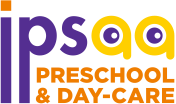In the world of early childhood education, the power of play cannot be underestimated. Play is not just a way for children to have fun; it’s a crucial aspect of their development. One of the most versatile and beloved tools for creative play in playschools and homes around the world is playdough. This humble, squishy substance offers a world of possibilities for children, sparking their imaginations and supporting their cognitive, physical, and social growth. In this blog, we’ll explore the magic of playdough, its role in playschools, and how parents can harness its potential to enhance their child’s development.
The Magic of Playdough
Playdough is a soft, moldable material that’s typically made from a combination of flour, salt, water, and food coloring. Its simple ingredients belie its incredible potential for creative play and learning. Here are some reasons why playdough is so magical for young children:
- Sensory Stimulation
One of the key benefits of playdough is its ability to stimulate a child’s senses. The tactile nature of playdough engages their sense of touch, while the vibrant colors and sometimes even scents appeal to their sense of sight and smell. As children squish, roll, and shape the dough, they’re also building their fine motor skills and developing hand-eye coordination.
- Imagination and Creativity
Playdough is a blank canvas for a child’s imagination. It can become anything they want it to be. From animals to vehicles, from food to abstract sculptures, children can mold and shape playdough into a myriad of forms. This process encourages creativity, problem-solving, and abstract thinking.
Playdough play often involves storytelling. Children might create characters, scenes, or scenarios with their playdough creations. This gives them the opportunity to narrate their stories, describe their characters, and engage in dialogue. Such imaginative play fosters language development and communication skills.
- Emotional Expression
Playdough can also be a useful tool for emotional expression. Children may use it to replicate their feelings or to work through difficult emotions. This allows them to process and express their thoughts and emotions in a safe and non-threatening way.
- Social Interaction
When children play with playdough, they often do so with others. This collaborative play encourages social interaction, cooperation, and the development of essential social skills. It’s an opportunity for children to negotiate, share, and work together to achieve a common goal, such as building a playdough city or hosting a pretend tea party.
Playdough in Playschools
Playschools or preschools are ideal settings for introducing children to the magic of playdough. Experienced early childhood educators understand the significance of play-based learning, and playdough is a valuable tool in this approach.
- Cognitive Development
In playschools, playdough is used to support cognitive development. Teachers can incorporate various activities that involve counting, sorting, and color recognition, using playdough as a hands-on learning tool. For example, children can create a specific number of animals or shape playdough into different colored objects.
- Fine Motor Skills
Fine motor skills, which involve the use of small muscles in the hands and fingers, are crucial for tasks like writing and buttoning clothes. Playdough activities help children strengthen these muscles, which can set them up for success in later academic endeavors.
- Social and Emotional Learning
Playschools focus on social and emotional development as well. Playdough is an excellent medium for teaching children how to share, take turns, and resolve conflicts peacefully. Teachers can guide children in collaborative play and discussions about their creations, encouraging them to express themselves and listen to others.
- Creativity and Problem-Solving
In playschools, children are encouraged to use their imaginations and creativity freely. Playdough provides a platform for solving problems and exploring solutions. For instance, children might be given a task like building a bridge out of playdough, encouraging them to think critically and experiment with different designs.
- Early Literacy and Numeracy
Playdough can also be used to introduce early literacy and numeracy concepts. Teachers can create letters, numbers, or simple shapes with playdough, helping children become familiar with these fundamental building blocks of learning.
Harnessing the Power of Playdough at Home
Parents can also harness the power of playdough to support their child’s development at home. Here are some ways to make playdough playtime more enriching:
- Homemade Playdough
Making playdough at home with your child can be a fun and educational activity in itself. You can find various homemade playdough recipes online, which often involve ingredients like flour, salt, water, and food coloring. Involving your child in the creation process teaches them about measurements, following instructions, and the science of mixing different materials.
- Theme-Based Play
To make playdough play more engaging, consider introducing themes. For example, you can have an “under the sea” theme where your child creates sea creatures and underwater scenes using playdough. Or, you can explore the concept of seasons by making playdough trees for each season and talking about the changes that occur.
- Storytelling and Playdough
Encourage your child to create characters and scenes from their favorite stories using playdough. This not only enhances their creativity but also helps them understand and retell narratives, which is an essential pre-literacy skill.
- Educational Challenges
You can set up simple educational challenges for your child using playdough. Ask them to make a certain number of shapes, objects, or animals, or introduce basic math concepts by having them divide playdough into equal parts.
- Art Integration
Combine playdough with art by creating playdough sculptures and then painting or drawing them. This introduces the idea of creating three-dimensional art and can be a wonderful way to foster creativity and artistic expression.
- Experimentation
Encourage your child to experiment with playdough by posing open-ended questions or challenges. For example, ask them, “What can you create with just one color?” or “Can you make something that can roll down a ramp?” These activities promote critical thinking and problem-solving.
Conclusion
The power of playdough in playschools and at home is undeniable. It’s a versatile and effective tool for promoting children’s sensory, cognitive, social, and emotional development. By harnessing the creative potential of playdough, parents and educators can provide young children with a rich learning experience that fosters their growth and sets the stage for a lifetime of joyful learning. So, the next time you see a child happily squishing and shaping playdough, remember that they are not just playing; they are engaging in a powerful learning experience.


